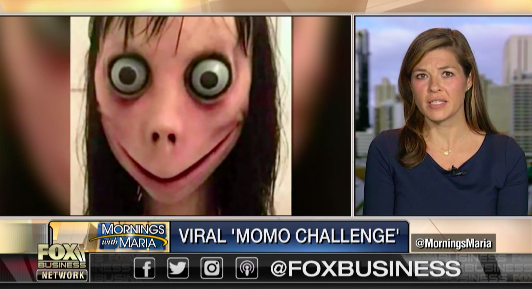
** Updated Feb. 28, 2019: This blog post was originally published back in August 2018. Due to the upsetting nature of the “Momo Game,” it has been known to go viral for a period of time, disappear, and then reappear. There have been some recent accounts across the internet that “Momo” has been seen spliced into YouTube kids’ videos or popping into games like Fortnite, but so far no definitive proof has been offered. Parents should keep an extra eye out for Momo challenge dares while their kids are online, however, until this trend plays out.
YouTube released a Tweet on Feb. 27, stating “We want to clear something up regarding the Momo Challenge: We’ve seen no recent evidence of videos promoting the Momo Challenge on YouTube. Videos encouraging harmful and dangerous challenges are against our policies.” **
* * *
Modern internet culture has created the perfect stage for the constant rise and fall of trends, videos, and challenges. These fads run the gamut from benign — remember 2016’s Mannequin Challenge? — to incredible forces of good, as shown by the millions raised by the Ice Bucket Challenge for the ALS Foundation.
But there’s a dark underbelly to the internet where an entire subculture of individuals create, consume, and share horrifying content. This content is designed to disturb — and it can lead to darker, more dangerous challenges. The Momo Challenge is the most recent example, and it has potentially devastating consequences.
What are Momo Challenge Dares?
Bark CMO Titania Jordan discusses the Momo Challenge on Fox Business.
Using the free text-based messaging service WhatsApp, kids dare each other to text a disturbing character called “Momo.” She will then respond with an escalating series of dares, harassing and threatening the player if they refuse to follow her orders.
Because WhatsApp is anonymous, anyone can claim to be Momo and begin provoking violent dares. This explains part of its viral nature — but viruses can be deadly. Reports attribute one teen’s suicide in Argentina to the Momo Challenge, a result of the final call to action.
How do kids get drawn into these sorts of things?
Children can get caught up in the excitement of viral trends and feel compelled to participate. However, they don't always understand the full consequences of their actions. While parents today may be flummoxed by these challenges, some may recall the popularity of horror media from their own youths, including the Goosebumps books, the Are You Afraid of the Dark? TV show, and the Scream movies.
The pull towards scary media isn’t peculiar to today’s generation — they just have access to devices that enable them to engage and interact directly with this dark media, which can result in violent consequences.
In 2014, a pair of teens obsessed with the spooky viral phenomenon “Slender Man” brutally attacked another teen in an attempt to impress the fictional character. Its popularity hasn’t waned, however. August 2018 saw the release of a SlenderMan film that brought the internet myth to the big screen and an even larger audience.
What should I do if I think my child is participating in the Momo Challenge?
Don’t be afraid to be direct, and address your concerns right away. It's important to have open, frequent, and honest conversation with your child. Bark can assist with recognizing warning signs of the Momo Challenge Dares by monitoring your child’s WhatsApp account. We can also monitor Reddit, a website that’s ground zero for new and emerging internet trends.
To drive home the importance of safety, you can talk to your children about real-life consequences that have happened as a result of fictional challenges. Telling your child not to participate in a challenge is much different from sharing pictures and stories of what can happen if they do. Consider the Tide Pod Challenge. Kids won’t necessarily stop to think that laundry detergent can burn their throats and cause extreme harm. But facts and photos can go a long way to deterring impulsive action.
At , to join a community of parents devoted to keeping kids safe from digital dangers.
Bark helps families manage and protect their children’s digital lives.






